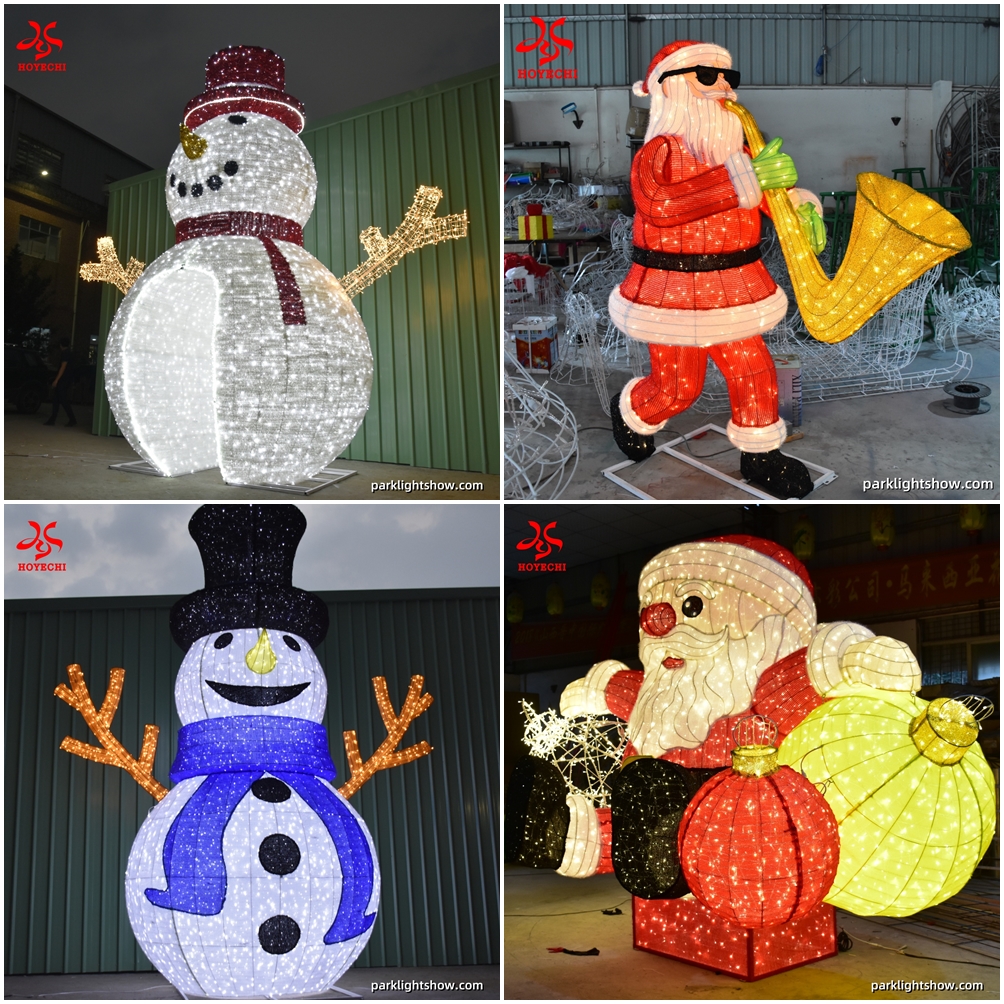How to Do a Light Show for Christmas: Behind the Scenes of a Successful Holiday Event
On a cold winter evening in a small North American town, a quiet municipal park is suddenly buzzing with energy. Thousands of lights illuminate the trees. Santa Claus soars through the sky in his sleigh. Music plays in harmony with twinkling snowflakes. Children laugh and pose beside glowing snowmen. What looks like holiday magic is, in fact, the result of meticulous planning and collaboration between local organizers and a professional lantern manufacturer. This is how a large-scale light show for Christmas comes to life.
From Concept to Execution: Turning Ideas into Action
It often starts with a vague proposal—“Should we do something to bring people back downtown for the holidays?” Initial ideas may include a big Christmas tree or a light tunnel. But those are only starting points. The real planning begins with defining goals, securing a budget, assessing the site, and identifying the audience.
Experienced lighting vendors usually offer full-service solutions: creative design, engineering, fabrication, and on-site support. In one project led by HOYECHI, the client proposed a simple “Santa and forest animals” idea. That evolved into a five-zone immersive trail, dozens of themed lanterns, interactive lighting, and storytelling installations.
Designing for Flow and Experience
Instead of just “putting up lights,” professional teams treat the venue as a narrative landscape. Light shows are carefully choreographed for both visual rhythm and crowd control. Layout planning follows commercial traffic patterns and emotional pacing:
- Entrance zones often feature giant Christmas trees or gateways to grab attention.
- Mid-sections include high-engagement zones like musical light theatres or interactive zones.
- Exit areas may include photo booths, holiday shops, or relaxation zones to increase dwell time.
HOYECHI and similar vendors use crowd simulation tools to optimize walking routes, prevent bottlenecks, and maintain a continuous sense of discovery.
Behind Each Display: A Fusion of Art, Engineering, and Technology
That 8-meter-tall Santa-on-reindeer sculpture is more than decoration—it’s a combination of structural design, electrical engineering, and aesthetic craftsmanship. Key components include:
- Steel frame engineering: Ensures wind resistance and public safety.
- Lighting systems: Use RGB LED controllers to create effects like gradient changes, flickers, or music sync.
- Exterior finishing: Includes PVC-coated fabric, acrylic panels, and airbrushed detailing.
For example, HOYECHI’s light tunnels come with built-in sound-sync controllers, transforming a simple walk into an immersive audio-visual journey—one of the most sought-after trends in modern holiday design.
Installation and Maintenance: Where Expertise Matters Most
The moment the lights turn on isn’t the end—it’s the beginning of a month-long operation. Outdoor light shows face constant exposure to weather, high foot traffic, and technical risks:
- All lights must meet IP65 waterproof standards and have reliable electrical safety systems.
- Load balancing, power distribution, and circuit protection must follow strict codes.
- Interactive devices (like sensors and projectors) require nightly inspections and maintenance protocols.
For shows running 20 to 40 days, a team is needed for night checks, power resets, weather responses, and daily walkthroughs. Without proper maintenance, even the best-designed display can fail.
From Show to Brand Asset: The Business Side of Light Shows
Holiday light shows are not just seasonal decorations—they’re potential city-wide events and tourism drivers. When executed well, they become branded visual experiences that attract both visitors and sponsors. Successful commercial events often include:
- Joint promotions with local governments, shopping districts, or hospitality venues.
- Merchandise based on show characters, logos, or themes.
- Live streaming, influencer content, and user-generated short video campaigns.
- Replicable touring shows across cities and regions.
HOYECHI even helps clients develop “asset reuse plans,” allowing parts of the show to be stored and reassembled in future years to reduce costs and maximize ROI.
FAQ: How to Do a Light Show for Christmas
Q1: How far in advance should we start planning a Christmas light show?
A: Ideally, planning should begin 4–6 months in advance. This allows time for theme design, budgeting, approval processes, custom lantern production, and on-site installation.
Q2: What is the minimum space requirement for hosting a large-scale Christmas light show?
A: There is no fixed size, but typically, a walk-through light show needs at least 2,000–5,000 square meters. Venues may include public parks, plazas, or commercial centers.
Q3: How much does it cost to do a light show for Christmas?
A: Budgets range widely depending on complexity, scale, and duration. Projects typically cost between USD $50,000 to $500,000 or more.
Q4: What types of lighting effects can be included in a Christmas light show?
A: Popular features include RGB LED animations, sound sync, projection mapping, sensor-based interaction, and theatrical light performances.
Q5: Can we reuse the lighting equipment next year?
A: Yes. Most lanterns and frame structures are designed for multi-year use. Vendors often provide storage and reuse solutions for future seasons.
A well-executed light show for Christmas is both a creative journey and a technical achievement. With the right strategy and support, your event can become a signature attraction with long-term cultural and commercial impact.
Post time: Jul-15-2025





